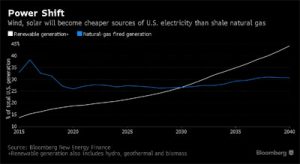Running on 100% renewable energy is quickly achievable, but most Americans aren’t aware of that.
More will be after this summer, because hundreds of people will knock on peoples’ doors to let them know.
Environment America Research & Policy Center is spending millions of dollars to reach about 1.3 million households.
Based in campaign offices in 19 states and the District of Columbia, canvassers will distribute literature that shows we can build an entirely clean grid at the same or less cost as maintaining our reliance on fossil energy.
The transition will save average families $260 per year on energy costs and $1500 in health care costs, according to Mark Jacobson’s research at Stanford University.
His Solutions Project has mapped how every city and the US as a whole can reach 100% renewable electricity, heating and transport and by 2050. They drill down to every detail – exactly how many devices are needed; their footprint and space required; costs; numbers of jobs, air pollution and climate benefits; and policies necessary for each state to get there.
“The main barriers to getting to 100% clean energy are social and political, not technical or economic,” says Jacobson.
Americans widely support clean energy, but the lack of attention from the mainstream media and misinformation from the conservative media is holding us back.
In another campaign, “Ready for 100,” 12 cities have committed to reaching 100% clean energy, including San Francisco and San Diego – which has a legally binding plan. Sierra Club expects to sign 50 cities by the end of this year.
San Diego – led by its Republican mayor – voted unanimously to run on 100% renewable electricity by 2035.
Renewable Electricity Dominates by 2031
The latest research shows that renewables (including hydro) will become the dominant energy source in the US by 2031, just 15 years from now! That’s when they will overtake natural gas, says Bloomberg New Energy Finance (BNEF).
Solar and wind will be cheaper than gas or coal without any incentives after 2020, leading to investors to pour in $745 million over the following 20 years, much more than the $95 billion spent on new fossil plants, BNEF says. They also expect demand for electricity to drop 9%.
By 2040, renewables will supply 44% of electricity, up from 14% in 2014. Gas will provide 30% and coal, just 12%.
And by 2030, “This will be the case everywhere,” says Elena Giannakopoulou, lead economist at BNEF. Renewables will dominate power grids 2027 in India, China and other countries that go straight from coal to renewables, with $7.8 trillion invested through 2040.
Read our article, Most Ambitious Climate Goals Lead to Greatest Economic Growth.

